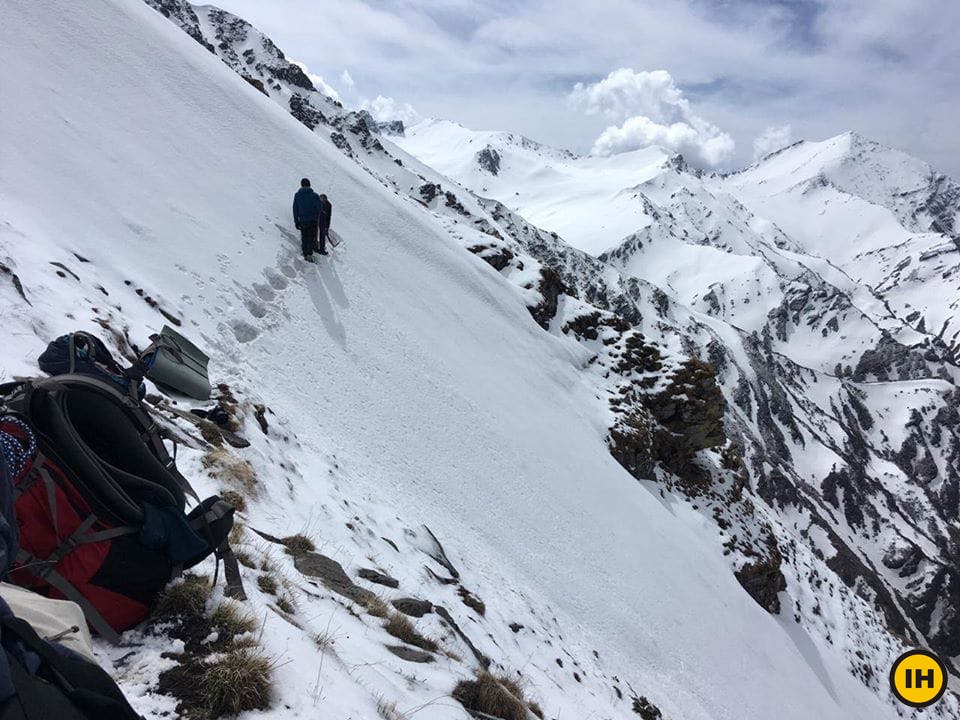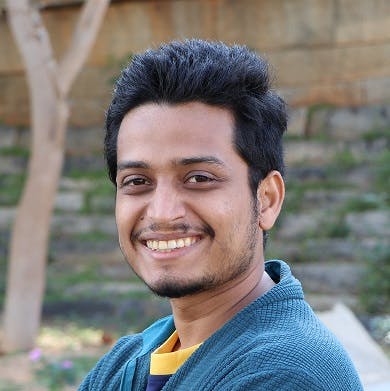How A Trek Changed The Way I Make Decisions
Share this story
How A Trek Changed The Way I Make Decisions
Category Working With Indiahikes Exploration Stories About Indiahikes
By Suhas Saya
2020-02-25
Trekking has impacted my life.
Ever since I started trekking around Bangalore, Western Ghats or in the Himalayas, I have felt the positive effects of trekking. And there have been many learnings. Treks impacted my mind, body and spirit. And leading an exploratory trek to Phachu Khandi justified this fact even more. The exploration not only helped me return as a stronger, clear-headed person but also took my decision-making skills to a whole new level.
Where I always went wrong
My work as a Trek Coordinator at Indiahikes involves making decisions on a daily basis. Here, timing matters. And for a long time, I felt I wasn’t doing justice to my role. Especially when it came to decision-making.
You see, I take a long time to decide. I hesitate to decide unless I have processed a thought many times. To top that, I’m shy, which keeps me from consulting proactively. This is why decision-making is a challenge for me. It has always been so.
When I look back, I notice instances where instead of taking a decision to solve a problem, I have merely adapted to the situation. I’ve lived with the problem. This has led to delays. For example, a quick, decisive call about a team member not fitting in the team would have helped. But delay in making such a decision hurt my team in the long run.
Good thing is, the exploration to Phachu Khandi changed that. And today, I would like to share my story and reflections with you.
Setting off on an exploration
Our preparations had started well. A couple of months before D day, we looked at all the different options to explore. It was an exciting phase. Going through maps of Uttarakhand, speaking to locals to get a better idea, double-checking our Garmin devices to mark the trail. Out of the 5 shortlisted treks, my colleague, Venkat and I narrowed down on a trek to Phachu Khandi, starting from Sankri.
Starting from Sankri and making our way towards our first campsite. PC – Indranil Aditya
This is a crossover trek. This meant we had to cross the Phachu Khandi mountain pass and trek to the other side, descending towards Yamunotri.
The first two days of the exploration were smooth. We easily crossed the treeline and the meadows. The trek was exceptionally beautiful and we were blessed with clear sunny weather!
Day 3, for us, was the big day. It involved trekking more than 9-10 hrs and crossing the pass.
And I clearly remember the evening of Day 2. The sun was setting across the valley, painting our tents in lovely colours. We had crossed the tree line and were close to the snowline. Our tents were trembling in the cold winds. And that evening, my mind raced with thoughts. So, I called for a late evening huddle.
Colours of sunset from the second campsite. PC: Indranil Aditya
After an hour of discussion, we broke down D-day into different sections. The first section in the alpine zone involved a big climb and reaching the saddle. The next section took us through the rocky terrain of the ridge towards depression and a lake called Sarutal. This section would continue towards the pass until we cross it and reach the other side.
We had to cover 16.5 km, during which we would climb 2,615 ft and then descend 4,483 ft on the other side. It was a race against time. But it wasn’t a first. We had crossed mountain passes before. By the end of the huddle, we gained clarity on how to tackle the big day.
The big day
Owing to all the nervous excitement, I woke up early. The sun wasn’t out yet. Stars still twinkled in the dark blue sky. It was a perfect morning start to the trek.
The exploratory team split into two. One team of five started early while the second team – with four local guides – decided to catch up after un-pitching our campsite. There was not a cloud in the sky and the warm sunlight felt great on our skin. It was a glorious day for the big climb!
Our team maintained a steady pace. The ascent was steep, but we kept going. After covering 2 kms in two hours, we reached the snowfields. Promptly, we put on our microspikes and trekked for about 40 minutes. Even with microspikes crunching the snow beneath our shoes, the team maintained a good pace.
The Big Day – Ascent to the alpine section. PC: Indranil Aditya
Soon we entered the alpine section. Views started to open up. Now we could clearly see the ridge we were climbing, the ridge that was running towards the pass.
With mountains looming around us, we saw the first glimpse of the pass. It looked like a speck, far away. Clouds hung low on the mountains around the pass. We paused for water and regrouped the team. Mountain goats grazed in the distance as we started mapping the next phase to the pass.
That year (2019) had witnessed the heaviest snowfall in a decade and this was visible across the slopes. Right in front of us, stood four tricky mountain slopes. The sight was unsettling. We had to traverse these slopes and we discussed how to do that.
A quick decision to make
With plans in place, we started on the trail again. The trail was narrow enough for just one of us to stand on it. To the right, there was a sheer drop of nearly 1500 ft!
After trekking for half an hour, we were almost at the end of the first of the four tricky sections. And then, it happened. It happened in a moment.
I slipped.
Before I knew it, I’d lost my footing and was hurtling down the drop on the right. My trekking pole was up in the air. I tried using my microspikes to arrest the fall but couldn’t get my footing right.
Everything happened within a fraction of a second. Just then our guide caught my hand. Thankfully, he was just inches behind me and acted within a second. He hurled me up.
The tricky section. PC: Venkat Ganesh
With shaking legs, I pulled myself back onto the trail. I was saved by the skin of my teeth. Had our guide not acted so quickly, I wouldn’t be here typing this today. Shaken, we carried on and crossed the first tricky section. The second mountain slope stared at us. And a third and then, a fourth.
The sun was high in the sky now and snow was melting faster, turning soft. Our spikes weren’t as effective in soft snow as they were on hard ice.
And as the leader of the exploratory team, I had a decision to make – should we carry on? Was it safe? If yes, we had to move ahead immediately. We had no time to lose. I had to make a decision quickly. It was an acid test for my decision-making skill.
And somehow, my hard-wired pattern of decision-making didn’t hold me back. I didn’t think a hundred times or procrastinate. My thoughts were as clear as the sky above me.
I was not okay with risking the life of any of my team members. And so it was decided; it was not going to be a successful exploration. Not at the cost of anything, not a broken leg, or a life. We would not cross the pass.
I asked my team to hold on and retraced the path to intercept the second team which was still catching up. They had just reached the alpine section with the ridge. We had a quick 5-minute discussion and debate on returning. Some of our local team members, who were open to taking risks felt we should still try going ahead.
But in the end, it was a safety call.
I did not want to come down or complete the trek with one team member not being alive. That was a terrible risk to take when Indiahikes stands for being the safest organization. The team understood this perspective and agreed to turn back.
Reflecting on my decision-making ability
As we were descending, we looked back. Thick clouds shrouded the pass. And they were headed towards us. There was a deep rumble in the distance. As we reached the lower camp, the team acknowledged that the decision to return was a good one. It felt good to hear this.
We descended further down. I did not feel wistful about an unsuccessful exploration. All the learning from the past few years at Indiahikes helped me make this quick decision.
The first challenging section on the trek with melting snow and slippery surfaces. PC: Indranil Aditya
While descending, hopping across boulders and streams, I could hear the voice of our founder, Arjun Majumdar, in my head. His voice, sharing stories on how there are more failed explorations than successful ones.
Once we reached our first camp, everyone withdrew in their tents to take a nap. However, I had so many thoughts running through my mind. I came out of my tent and was immersed in the sounds of the river gushing near the campsite. Sitting on the lush green grass, I silently reflected on the trek. The magnitude of the day’s incidents slowly hit me.
The spirit of being alive and the adventures we had experienced that day lifted me as a person. Although this was not a successful exploration, the learnings that I took back were enormous.
Looking ahead
Recently I took up the role of heading the trek coordinators’ team. As a leader of the team, I bear the responsibility of making decisions for the team, for the organization and/or for the well being of the trekkers.
And I often reflect back to this incident. Whenever there is a tough decision to take, learnings from this exploration gives me the confidence to go ahead with my gut instinct. The impact of this exploration reflects on my decision-making ability. I have learnt to take the plunge.
Has a trek changed your life in any way? Drop your experience in comments below. Would love to know about it!
Sign up for our much loved Weekly Mailer
We have terrific trekking tips, trek updates and trek talks to look forward to

